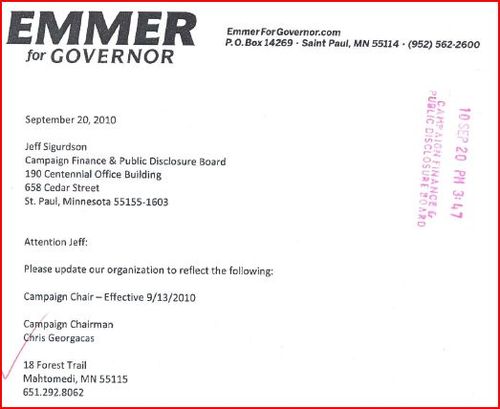Courtesy of XKCD, here‘s one of my favorite comic strips ever:
I think about it every time a DFL chantingpointbot starts talking about things like “proof” and “evidence”.
Which brings us to this piece in MNPublius, which gurgitates one of the most alarmingly cynical memes the DFL and media (pardon the redundancy) are trying to foist on the less-literate:
It’s been well-documented that cuts to local government aid cause property taxes to rise.
Now, I spent the weekend going through the text of every piece of legislation that led to a freeze, reallocation or cut in Local Government Aid in the past ten years [1], looking for a passage that read like “Local Governments are required to raise taxes to make up for the change in the aid formula”.
Because there is none.
Local Government Aid, for the umpteenth time, was originally intended to redistribute money state tax money to poor outstate school districts and cities, so that towns like Hibbing could rebuild old schools, or Thief River Falls could have a waste-water treatment plant, or Osage could get a new police car.
It’s become a vehicle for the state’s largest (and most DFL-addled) cities, Minneapolis, Saint Paul and Duluth, to launder their own rapacious spending throug the state budget without having to account to city and county taxpayers.
My own analysis ([in the original MNPublius posting – Ed]) shows that property taxes have steadily risen as state aid has dropped.
But Jeff’s piece doesn’t show where the causation, the coercion, the cause is. Because yes – as Local Government Aid has slowed, cities have had to decide whether to make their own tax base cover the difference, or to do without. Some cities, like west-metro Mound (which hasn’t gotten LGA in years) made the tough choices, cut the budgets, and learned to make do.
Others, like Minneapolis and Saint Paul and Brainerd – addled by DFL mayors and/or city councils – raised property taxes by far more than the cuts to LGA.
At any rate – Rosenberg’s premise , that “cuts to LGA force property tax hikes”, is a canard, a shrill chanting point that is based in no fact whatsoever.
A local government can opt to keep taxes rock-steady no matter what happens to LGA, and trim what’s needed; they can also make the case to their citizens and taxpayers to keep paying the bills that were formerly paid by taxpayers around the rest of the state, and let the chips fall come election time; in cities like Mound, it’s a dodgy proposition; in Minneapolis and Saint Paul, the DFL will keep getting elected no matter what.
There’s a simple reason for that: Cities provide essential services that residents don’t want cut. So instead of cutting back on public safety or filling potholes, local governments are forced to make up for lost revenues by increasing property taxes.
There’s a non-sequitur there – one the DFL is counting on The People not to notice; cities do provide essential services. They also provide plenty of non-essentials. In Saint Paul, I pay for the best urban fire department in the US; I’m happy to do it. We have a decent police department; there’s room for improvement, but they’d OK.
We have a lot of libraries. I love libraries – I practically grew up in one. But as libraries become home to fewer and fewer books, it pains me to say we could perhaps do with just a tad fewer of them and not make them any less available.
We have a public works department. I pay them to fill in potholes. They get to it – eventually. Clearly there is fat to be cut here. They also plow the streets. They do an adequate job – one that could easily be privatized, along with many other city-paid services.
We have a park and rec department. I love parks. I love recreation. The city has dozens of “Community Centers” which serve as public service catchalls for every variety of recreation and social program imaginable. There would seem to be room for some consolidation. And frankly, mowing the grass in the parks could be cut waaaay back.
I also pay for a city Human Rights office that fully duplicates the functions of the Ramsey County and State human rights offices, all located within a few blocks of each other in downtown Saint Paul. I pay for a mayoral staff with nineteen along with a phalanx of assistants and other hangers-on.
Could any of these be trimmed before we start laying off cops and firemen? I think so.
Will it happen? In Saint Paul, probably not. For all the Mayor’s whinging, the city’s government-dependence-addled electorate will likely increase property taxes to cover whatever they lose from LGA. Most of the people who care about tax rates have already fled the cities to places with more responsible, responsive governments.
Now – if you live in a city with a more responsible government, the answer may be different. The mayor may not be able to justify the expense.
But it’s a matter of choice. Not “force”, as Jeff, the media and the DFL (pardon the redundancy) would like you to think.
Fortunately, the MNGOP has a “solution” for that: take away the right of local governments to make their own decisions and force them to cut essential services. That’s the impact of HF481, a bill by House Republicans that would make local governments’ budget decisions for them by outlawing any property tax increases in the 2012 fiscal year.
That sounds nice, except for one thing — if property taxes are frozen, that means services must be cut. Apparently, an all-cuts budget that slashes $6.2 billion in state funding for things like education isn’t good enough for the MNGOP. They want to force your city government to cut even more services.
The merits of HF481 notwithstanding – it’s worth a discussion – Rosenberg’s wrong. Not all “services” are essential. We, the taxpayers of our DFL=-addled cities, can do without $50,000 drinking fountains and misappropriation of city staff to political ends and all the other worthless patronage our cities pay for.
The point is, cuts in LGA do not lead inexorably to property tax hikes. It is entirely voluntary – dependent entirely on the addiction of local government to spending, their success in selling those compensatory hikes to their voters, and how fed-up the voters are.
Why should voters in Bemidji pay for Saint Paul’s human rights office?



 Voter ID: It’s pretty much been reduced to a chant; “Republicans want to keep people from the polls”.
Voter ID: It’s pretty much been reduced to a chant; “Republicans want to keep people from the polls”.
 ities and national left has been flexing its proverbial muscles over Target’s donation to MNForward.
ities and national left has been flexing its proverbial muscles over Target’s donation to MNForward.

